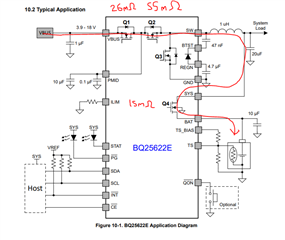Hey Team,
I just want to confirm 5Vin @3A is able to charger a 4.45V battery.
There is about 100mΩ between battery and VBUS, resulting in 300mV voltage drop. (5V -> 4.7V)
Is there a maximum duty cycle spec I need to consider as well?

Thanks,
Cameron Wutzke

